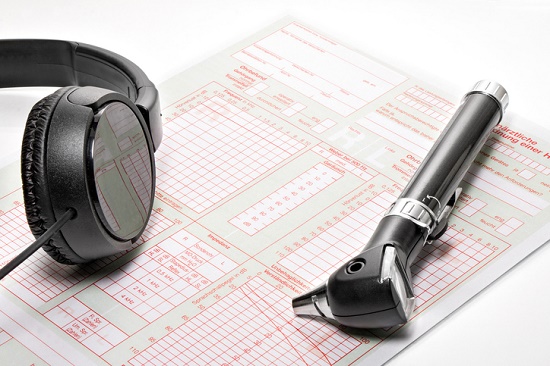
The hearing exam really is the easy part. The difficult part is acknowledging your hearing loss and actually scheduling the hearing test in the first place.
You’ve probably read the statistics by now: 48 million individuals in the United States suffer from hearing loss but only a small fraction actually do anything about it, and only 20 percent of those who could reap benefits from hearing aids actually use them.
So if you’ve already set up your hearing test, congratulations, you’ve already conquered the largest obstacle to better hearing.
The hearing test, as you’ll discover, is an easy, non-invasive process that will identify the magnitude of your hearing loss to help determine the most suitable treatment course.
Shortly after you first arrive at the office, you’ll start by completing some paperwork. Then, you’ll meet with your hearing care provider to talk about your hearing health history.
Your Hearing Health History
Your hearing loss, if existing, can be triggered by exposure to loud noise, the normal aging process, or by an underlying ailment. You’ll want to exclude any underlying medical conditions prior to moving on to the actual hearing test.
If you have an impaction of earwax, for instance, you could be hearing better within minutes shortly after a professional cleaning. The existence of any other ailments will be assessed and the appropriate referral made, if necessary.
After analyzing your basic medical history, you’ll go over your exposure to loud sounds, your hearing loss symptoms, and exactly what you would like to accomplish with better hearing.
It’s vital to establish potential causes, how symptoms are adversely affective your life, and how better hearing will improve your life, which is after all the whole point. Be suspicious of the practitioner that doesn’t seem to care about the reasons why you desire to improve your hearing to begin with.
The Hearing Test
There’s one more step to take before starting the hearing test: the visual evaluation of the ear with an instrument known as an otoscope. This will help in ruling out any problems with the ear canal, the eardrum, or the surplus accumulation of earwax.
Next, you’ll be escorted to a sound-treated room with your hearing care provider. You’ll be asked to wear headphones, and the provider will begin to play you some sounds.
You’ll be presented with various sounds at different frequencies, and you’ll be requested to identify the quietest sounds you can hear at each pitch. This is labeled your hearing threshold, and the hearing care provider will record these values on a graph called an audiogram.
The hearing exam may also include speech testing, where you’ll be instructed to repeat the words presented to you. Assorted types of words, presented at different volumes with and without background noise, will be introduced. This will help establish if hearing aids can help you with speech understanding.
When the hearing test is concluded, your hearing care professional will discuss the results with you.
Reviewing Your Hearing Test Results
Referencing your audiogram, your hearing care professional will now talk about your hearing in both ears. Based on the results, your hearing will be classified as normal or as displaying mild, moderate, severe, or profound hearing loss.
If a hearing loss is present, the next move is talking about your treatment options. Considering that there are no existing medical or surgical treatments to restore hearing damage, this means examining your hearing aid options.
Contemporary hearing aids come in a variety of shapes, sizes, and colors, at different price points with several sophisticated features. In picking out your hearing aids, it’s essential to work with an experienced hearing care professional for three reasons:
- They can help you identify the best hearing aid model to satisfy all of your objectives.
- They can help you identify the advanced features you need—as well as with the ones you don’t—at a price tag that suits your budget.
- They can program your new hearing aids to amplify only the sounds you have trouble hearing—identified by the hearing test—ensuring optimal sound quality.
And that’s it, a quick, simple procedure in exchange for a lifetime of healthier hearing. We’d say that’s a very good deal.
We look forward to seeing you!